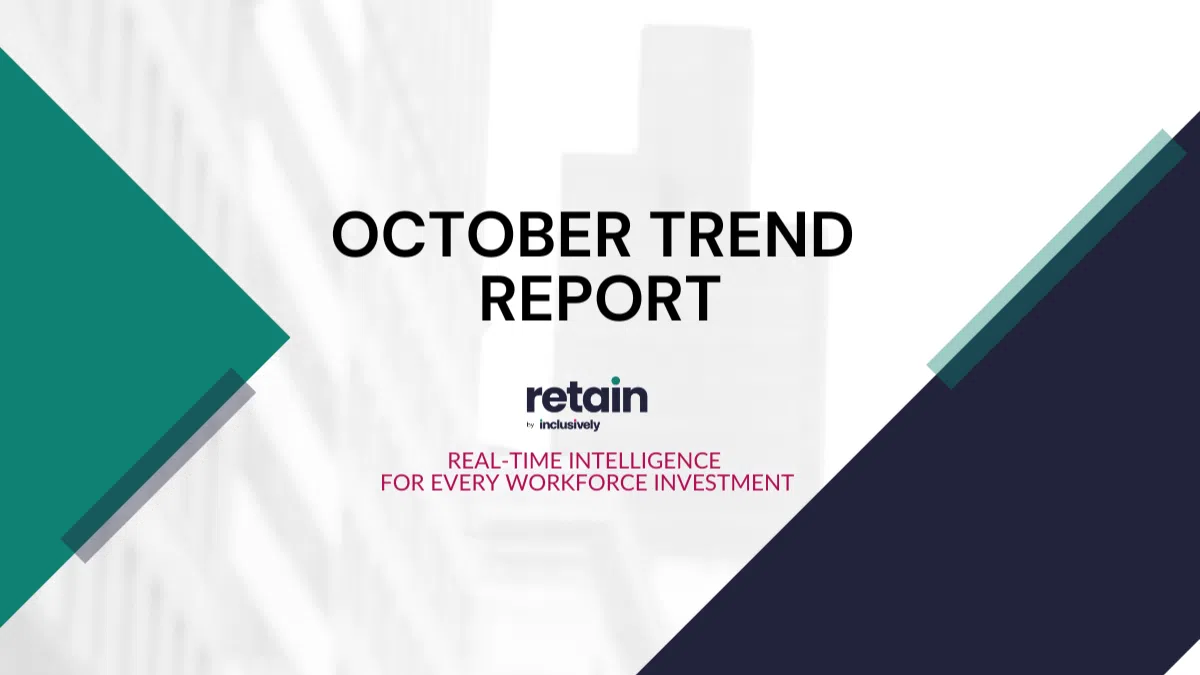Inclusively Partners with Zulily

A cross-industry look at rising healthcare costs—and what real employee signal data reveals about how to fix it.
As employers brace for another year of rising healthcare costs (the second-largest expense after payroll) the stakes have never been higher. Benefits now account for nearly 30% of total compensation, yet many organizations are questioning whether those investments truly deliver impact.
Leaders are searching for a way to do both: retain talent and control costs, without compromising one for the other.
The challenge is no longer what to offer, but how to align spend with what employees actually use and need. This report combines projections from Aon, Mercer, PwC, and McKinsey & Company with Inclusively’s 2025 Workforce Signal data to reveal where budgets are breaking—and how forward-thinking employers are course-correcting.
“We’re at a tipping point. Employers can’t just keep adding more benefits and hoping engagement follows. The question is no longer, ‘Do we offer enough?’ It’s ‘Do our employees even know how to use what we already provide?’
In a world of rising costs, having aggregated insight across every support, from traditional health benefits to everyday wellbeing resources, has never been more critical. Without understanding that full landscape of needs, it’s impossible to invest wisely or make these programs truly work.” — Charlotte Dales, CEO & Co-Founder, Inclusively
The Industry Warning Signs Are Everywhere
Leading advisory firms project steep increases in employer healthcare costs for 2026 and beyond. Every major firm agrees: healthcare inflation will outpace wages, putting pressure on employers to prove measurable value.
2026 Healthcare Cost Forecasts — Major Firms are Ringing the Alarm
Aon: +9.5% increase in U.S. employer health costs
“Employer health care costs expected to rise 9.5% in 2026 — highest in a decade.” — Aon Mediaroom, Sept 2025
Mercer: +6.5% increase — a 15-year high
“Employers are bracing for the highest health benefit cost increase in 15 years.” — Mercer, 2025
PwC: +8.5% medical cost trend for group market
“Medical costs will remain elevated at 8.5% in 2026, driven by chronic condition spend.” — PwC, Behind the Numbers 2025
McKinsey: +7% CAGR through 2028
“Structural margin growth in healthcare will continue to outpace GDP.” — McKinsey, 2025 Healthcare Outlook
Across all projections: employer healthcare costs are rising faster than both wages and inflation—making ROI alignment no longer optional.
The Gap Between Investment and Impact
Invisible Friction Costs Productivity
- 44% of employees say personal needs have a severe or significant impact on productivity.
- 58% report paying out-of-pocket for work-related tools or services their employer didn’t provide. (Inclusively Workforce Signal Report, 2025)
Budget ≠ Value Alignment
- Employees rank productivity tools and mental health resources as most valuable.
- Budgets, however, remain concentrated in traditional and under-used benefits.
- Priorities differ by role: Engineering/IT → tech + learning; Creative → neurodiversity + mental health.
Signal: Even as costs rise, employers are still overinvesting in underused programs while underinvesting in what actually drives engagement, productivity, and retention.
What the Best-Run Employers Are Doing
The data reveals a clear pattern: traditional, survey-based planning cycles are too slow. Top-performing employers are shifting to continuous listening and adaptive budgeting.
Three Proven Steps:
- Listen in real time. Replace lagging annual surveys with live “signal” capture—anonymous employee queries across systems like Teams, ServiceNow, and Workday.
- Map signals to what already exists. Build a unified view of policies, benefits, and vendor programs to spot overlaps, gaps, and misalignment.
- Reallocate for measurable ROI. Shift budget from under-utilized areas to high-demand supports such as productivity tools, mental health, and role-specific resources. Track outcomes over time.
Budget Reality Check for 2026
If you do nothing: expect 6.5–9.5% cost growth. Even with plan design changes: net increases of 5.8–7.3% remain likely. Medical trend: 8.5% for group market; 7.5% for individual market.
The implication is clear — the only defensible strategy is alignment: fund what employees use, and cut what they don’t.
Turning Signals into Spend Alignment
Platforms like Retain by Inclusively operationalize this “signals → alignment → ROI” loop:
- Capture anonymous employee signals across HR systems.
- Map those signals to your existing benefits and vendors to reveal gaps and duplication.
- Measure utilization and outcomes to demonstrate ROI to Finance.
The result: smarter reinvestment, faster ROI, and measurable retention impact.
How to Act This Quarter
For Brokers
- Bring independent cost forecasts (Aon, Mercer, PwC) into Q4 strategy sessions.
- Audit utilization vs. investment with live employee signals.
- Propose reallocation plans and leverage carrier credits where applicable.
For Benefits Leaders
- Stand up a signals dashboard (weekly cadence).
- Map your full inventory of benefits, policies, and vendors.
- Partner with Finance on an ROI scorecard: utilization lift, redirected spend, retention metrics.
Turn Insight into Action
Explore how Retain helps brokers and benefits leaders capture employee signals, align spend, and prove ROI.
Source Notes
- Aon (2025): U.S. employer health cost projection +9.5%, Sept 2025.
- Mercer (2025): +6.5% increase, highest in 15 years.
- PwC (2025): 8.5% medical cost trend for group market.
- McKinsey (2025): Structural cost growth, 7% CAGR through 2028.
- Inclusively Q2 2025 Workforce Signals: 924 respondents; 1,900+ employee searches.
Trend Report by Inclusively Turning workforce signals into smarter spend decisions.